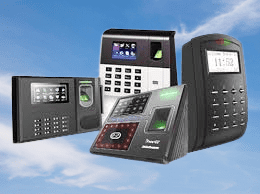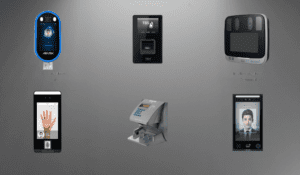A biometric access control system is a security solution that uses biometric technology, such as fingerprint or facial recognition, to verify a user’s identity and grant access to a secure area. These systems offer high security and accuracy, are easy to use, and can be integrated with other security systems. Learn about the technical specifications and advantages of biometric access control systems.
Biometric access systems are becoming increasingly popular in the pharmaceutical industry due to their ability to enhance security and improve compliance with regulations. In the pharmaceutical industry, these systems can be used to restrict access to sensitive areas, such as laboratories, manufacturing facilities, and data centers, ensuring that only authorized personnel are granted access.
Pharmaceutical companies are subject to strict regulatory requirements, such as Good Manufacturing Practices (GMP), which require them to implement strict security controls to ensure the safety, purity, and effectiveness of their products. Biometric access systems can help pharmaceutical companies to comply with these regulations by providing a reliable and secure way to manage access to sensitive areas.
In addition, biometric access c systems can help pharmaceutical industries 4.0 protect valuable intellectual property, prevent theft, and improve overall security by providing an accurate and reliable way to identify individuals who enter and exit secure areas.
Overall, the use of biometric access systems in the pharmaceutical industry can provide a wide range of benefits, including improved security, compliance with regulations, and protection of valuable assets.

Technical Specifications of Biometric access control systems.
Biometric access systems typically have a range of technical specifications, including:
-
- Biometric sensors: The type of biometric sensor used in the system can vary, with options including fingerprint scanners, facial recognition cameras, iris scanners, and palm scanners. The sensor should be reliable, accurate, and able to scan a wide range of users.
- Processing speed: The processing speed of the system determines how quickly it can verify a user’s identity and grant access. A faster processing speed is ideal for high-traffic areas where quick access is essential.
- Storage capacity: The storage capacity of the system determines how many user profiles and access logs can be stored. A larger storage capacity is ideal for larger organizations with many users.
- Communication protocols: The communication protocols used by the system should be compatible with the existing IT infrastructure. Common communication protocols include TCP/IP, RS485, and Wi-Fi.
- Integration: The system should be compatible with other security systems, such as surveillance cameras and alarms, and should be able to integrate with existing security infrastructure.
- Durability: The system should be durable and able to withstand harsh environments and extreme weather conditions.
- Power consumption: The power consumption of the system is an important consideration for installations where the power supply is limited or unreliable.
- User interface: The user interface of the system should be intuitive and easy to use for both administrators and users.
- Security features: The system should have advanced security features, such as encryption and authentication protocols, to prevent unauthorized access to the system or user data.
- Compliance: The system should be compliant with relevant regulations and standards, such as GDPR, ISO 27001, and HIPAA.

Why Pharmaceutical Plants Use Biometric Access Control Systems
Biometric access systems use a person’s unique biological characteristics, such as fingerprints, iris patterns, facial features, or voice patterns, to verify their identity and grant them access to a secured area. Here are some reasons why using a biometric access control system is beneficial:
-
- Enhanced security: Biometric access systems provide a higher level of security compared to traditional access control systems that rely on keys, cards, or passwords. Biometric traits are unique to each individual and cannot be easily replicated, which makes it harder for unauthorized persons to gain access.
- Convenience: Biometric access systems are more convenient than traditional access control systems because there is no need to carry around keys or remember passwords. It also saves time because there is no need to manually verify identities.
- Increased accountability: Biometric control systems can track and record the movements of individuals who gain access to a secured area. This feature increases accountability and helps identify potential security breaches.
- Cost-effective: Over time, biometric access systems can be cost-effective because there is no need to constantly replace lost or stolen keys or cards. It also reduces the costs associated with managing passwords and access codes.
- Flexibility: Biometric access systems can be customized to meet the specific security needs of an organization. It can be used to grant access to different areas of a building or to specific equipment and devices.
Overall, biometric access systems provide a secure, convenient, and cost-effective solution to access control, which makes it an attractive option for organizations that prioritize security.
Biometric access control example
In the pharmaceutical industry, access control is crucial for maintaining the safety and security of the products and confidential information. Biometric access control systems can be used in various areas within a pharmaceutical company, such as:
-
- Laboratory access: Biometric access control systems can be used to grant access to laboratory areas where research and development work is being carried out. This ensures that only authorized personnel have access to sensitive materials and data.
- Cleanroom access: In pharmaceutical manufacturing, cleanrooms are critical areas where sterile products are produced. Biometric access control systems can be used to ensure that only authorized personnel with the necessary qualifications and training can enter these cleanrooms.
- Data center access: Biometric access control systems can be used to secure data centers, which contain valuable and confidential information about research, development, and manufacturing processes.
- Restricted areas: Biometric access control systems can be used to secure restricted areas within a pharmaceutical facility, such as storage rooms for controlled substances, quarantine areas for potentially contaminated products, and areas where hazardous materials are handled.
Overall, biometric access control systems provide a secure and efficient way to manage access control in the pharmaceutical industry. By using biometric authentication, pharmaceutical companies can ensure that only authorized personnel have access to sensitive areas, thereby reducing the risk of theft, contamination, and data breaches.
Frequently Asked Questions:
What is a biometric access control system in pharmaceuticals?
Answer: biometric access control system is a security solution that uses biometric technology to verify a user’s identity and grant access to a secure area in the pharmaceutical industry.
What biometric technologies are commonly used in pharmaceutical biometric access control systems?
Answer: Common biometric technologies used in pharmaceutical biometric access control systems include fingerprint scanners, facial recognition cameras, and iris scanners.
How does biometric access control system enhance security in pharmaceuticals?
Answer: Biometric access systems enhance security in pharmaceuticals by providing a reliable and secure way to manage access to sensitive areas, such as laboratories, manufacturing facilities, and data centers, ensuring that only authorized personnel are granted access.
How can biometric access control systems help pharmaceutical companies comply with regulatory requirements?
Answer: Biometric access systems can help pharmaceutical companies comply with regulatory requirements, such as Good Manufacturing Practices (GMP), by providing a reliable and secure way to manage access to sensitive areas.
What are the benefits of using biometric access control system in pharmaceuticals?
Answer: The benefits of using biometric access systems in pharmaceuticals include improved security, compliance with regulations, protection of valuable assets, and prevention of theft.
How do biometric access control systems protect intellectual property in the pharmaceutical industry?
Answer: Biometric access systems protect intellectual property in the pharmaceutical industry by providing an accurate and reliable way to identify individuals who enter and exit secure areas.
What are the technical specifications of biometric access control systems in pharmaceuticals?
Answer: The technical specifications of biometric access systems in pharmaceuticals include biometric sensors, processing speed, storage capacity, communication protocols, integration, durability, power consumption, user interface, security features, and compliance.
You may also check Microbiology Guidelines here
How can biometric access control systems be integrated with other security systems in pharmaceuticals?
Answer: Biometric access systems can be integrated with other security systems in pharmaceuticals, such as surveillance cameras and alarms, to enhance overall security.
What are the potential disadvantages of using biometric access control systems in pharmaceuticals?
Answer: The potential disadvantages of using biometric access systems in pharmaceuticals include cost, system complexity, and privacy concerns.
How can pharmaceutical companies ensure the accuracy and reliability of biometric access control systems?
Answer: Pharmaceutical companies can ensure the accuracy and reliability of biometric access systems by regularly calibrating the system, training personnel on proper use, and conducting regular audits to ensure compliance with regulations.
